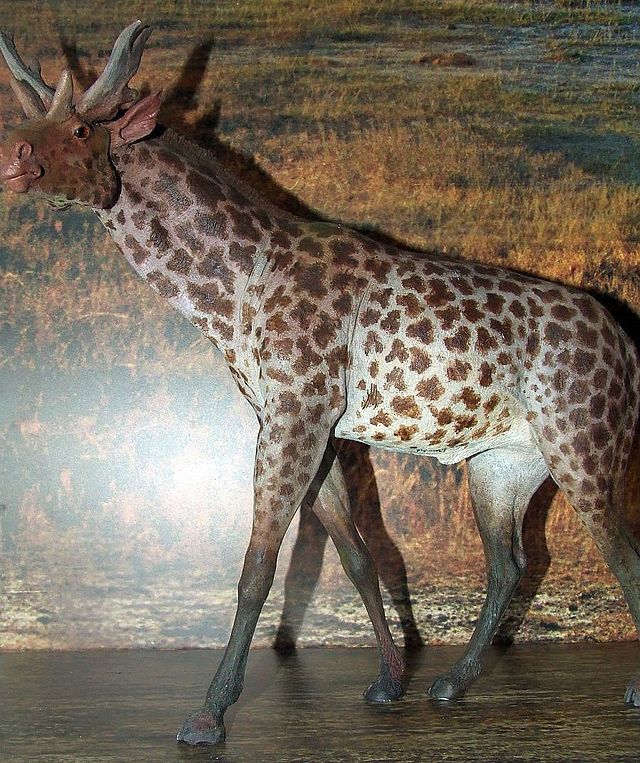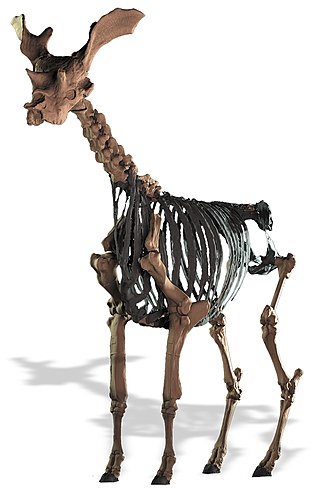Top Qs
Timeline
Chat
Perspective
Sivatherium
Extinct genus of mammals From Wikipedia, the free encyclopedia
Remove ads
Sivatherium ("Shiva's beast", from Shiva and therium, Latinized form of Ancient Greek θηρίον - thēríon) is an extinct genus of giraffid that ranged throughout Africa and Eurasia. The species Sivatherium giganteum is, by weight, one of the largest giraffids known, and also one of the largest ruminants of all time.[3]
Sivatherium originated during the Late Miocene (around 7 million years ago) in Africa and survived through to the late Early Pleistocene (Calabrian) until around 1 million years ago.[4]
Remove ads
Description
Summarize
Perspective



Sivatherium resembled the modern okapi, but was far larger, and more heavily built, being about 2.2 m (7.2 ft) tall at the shoulder, 3 m (9.8 ft) in total height with a weight up to 400–500 kg (880–1,100 lb).[5] A newer estimate has come up with an estimated body mass of about 1,250 kg (2,760 lb)[3] or 1,360 kg (3,000 lb).[6] This would make Sivatherium one of the largest known ruminants, rivalling the modern giraffe and the largest bovines. This weight estimate is thought to be an underestimate, as it does not take into account the large horns possessed by males of the species. Sivatherium had a wide, antler-like pair of ossicones on its head, and a second pair of ossicones above its eyes. Its shoulders were very powerful to support the neck muscles required to lift the heavy skull. Sivatherium was initially misidentified as an archaic link between modern ruminants and the now obsolete, polyphyletic "pachyderms" (elephants, rhinoceroses, horses and tapirs). The confusion arose in part due to its graviportal (robust) morphology, which was unlike anything else studied at that time.[7]
Remove ads
Diet
A dental wear analysis of S. hendeyi from the Early Pliocene of South Africa found that the teeth were brachyodont, but had a higher hypsodonty than a giraffe, and that it was best classified as a mixed feeder, being able to both graze and browse.[8] Analysis of dental microwear and mesowear paired with δ13C and δ18O measurements of S. maurusium from Ahl al Oughlam in western Morocco show it predominantly fed on C3 vegetation.[9]
Remove ads
Relationship with humans
Remains of Sivatherium from Olduvai Gorge in Tanzania, dating to around 1.35 million years ago have been found associated with stone tools and bearing cut marks, indicating butchery by archaic humans, likely Homo erectus.[4] Historically, it has been suggested that figurines from Sumeria and ancient rock paintings in the Sahara[7] and Central West India represent Sivatherium.[10] However, these claims are not substantiated by fossil evidence (which suggest that the genus was extinct long before the emergence of modern humans), and the depictions likely represent other animals.[11]
See also
References
Further reading
Wikiwand - on
Seamless Wikipedia browsing. On steroids.
Remove ads

